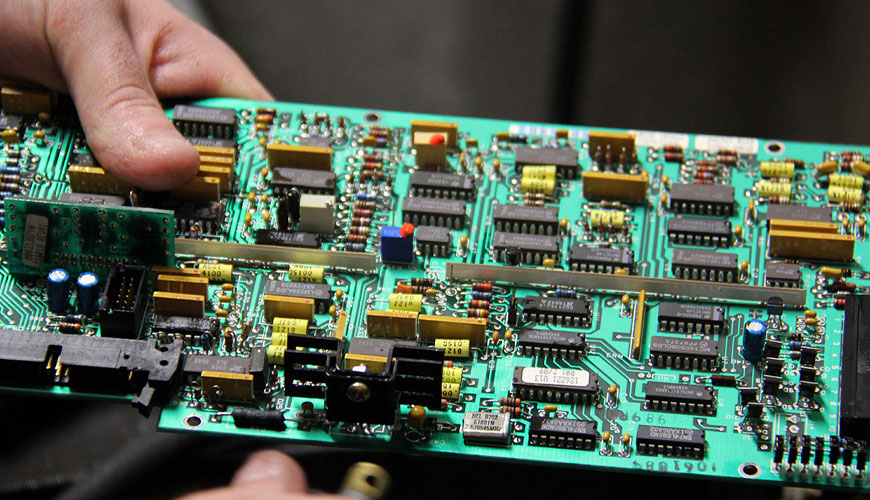

EUROLAB, with its state-of-the-art accredited laboratories and expert team, provides precise and fast testing services within the scope of IEC EN 61249-4-19 testing. IEC EN 61249-4-19 gives the requirements for prepreg properties intended for use as bonding sheets in conjunction with laminates according to IEC EN 62326-4-61249 when producing multilayer sheets according to IEC EN 2-40.

Multilayer boards made of these materials are suitable for lead-free assembly operations. This material can also be used to bond other types of laminate. According to this standard, Prepreg has defined flammability (vertical combustion test). The degree of flammability on the fully cured prepreg is achieved through the use of non-halogenated flame retardants as an integral part of the polymeric structure. After the prepregin has been cured according to the supplier's instructions, the glass transition temperature is defined as a minimum of 170°C.
Prepreg consists of a reinforcing E-glass fabric partially cured to stage B, impregnated with a high performance, non-halogenated epoxy resin. The degree of flammability is achieved through the use of non-halogenated flame retardants that react to the polymer. Inorganic fillers can be used. Contrast agents can be added to improve processing, such as automatic optical inspection (AOI).
High performance, non-halogenated epoxide with a glass transition temperature after curing to a minimum of 170°C per manufacturer's instructions. The degree of flammability is achieved through the use of non-halogenated flame retardants that react to the polymer. Inorganic fillers can be used. Contrast agents can be added to improve processing, such as automatic optical inspection (AOI). The maximum total halogen contained in the resin plus reinforcement matrix is 900 ppm, with a maximum chlorine 900 ppm and a maximum bromine 1500 ppm.
In determining the presence of broken filaments, their size and frequency of occurrence are important for assessing acceptability, but the flow characteristic of the prepreg must also be considered. Acceptance conditions for broken filaments will be as agreed between the user and the supplier.
EUROLAB assists manufacturers with IEC EN 61249-4-19 test compliance. Our test experts, with their professional working mission and principles, provide you, our manufacturers and suppliers, the best service and controlled testing process in our laboratories. Thanks to these services, businesses receive more effective, high-performance and quality testing services and provide safe, fast and uninterrupted service to their customers.
To get an appointment, to get more detailed information or to request an evaluation, you can ask us to fill in our form and reach you.